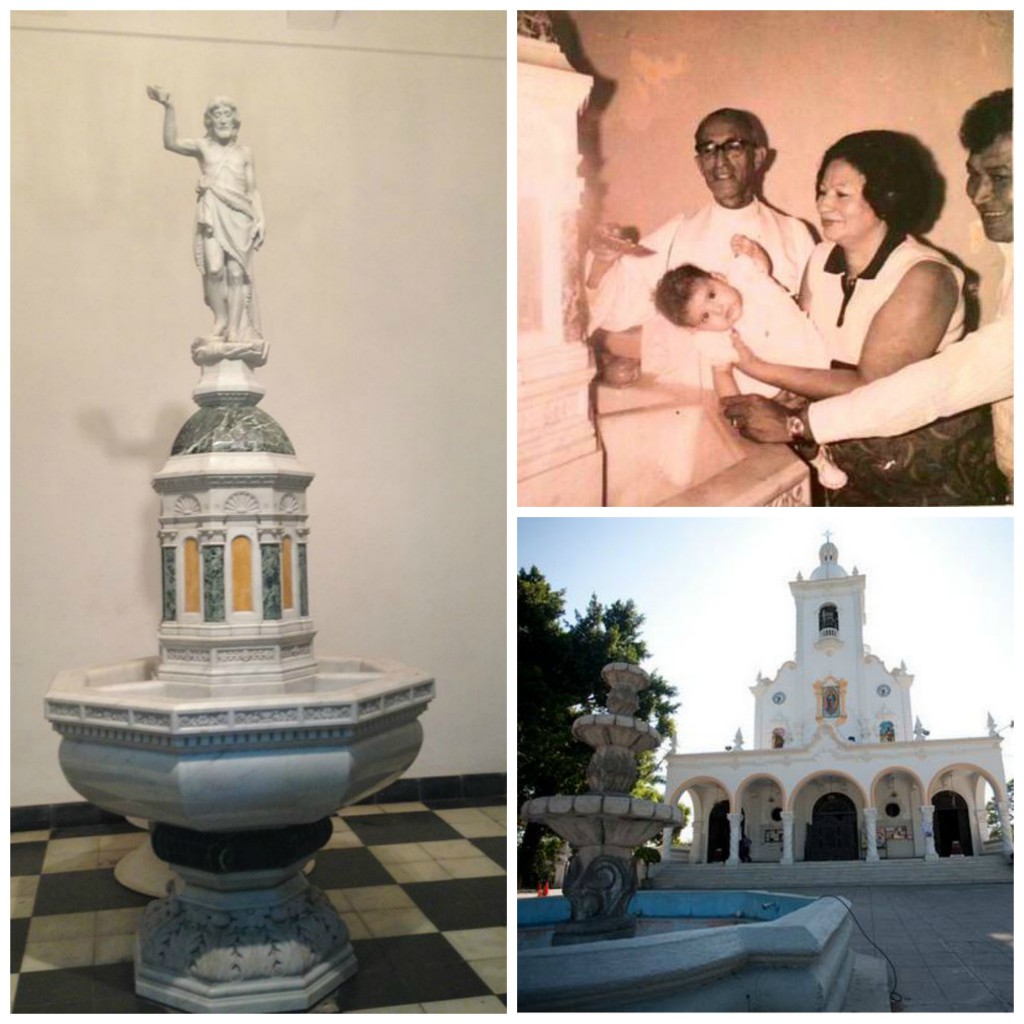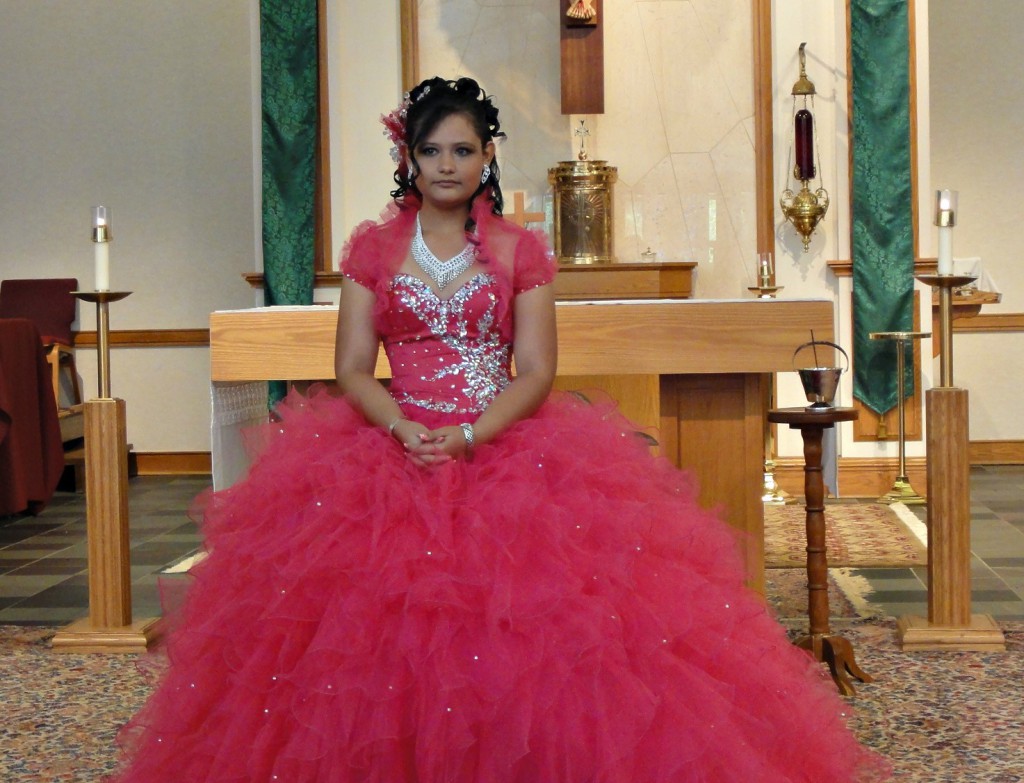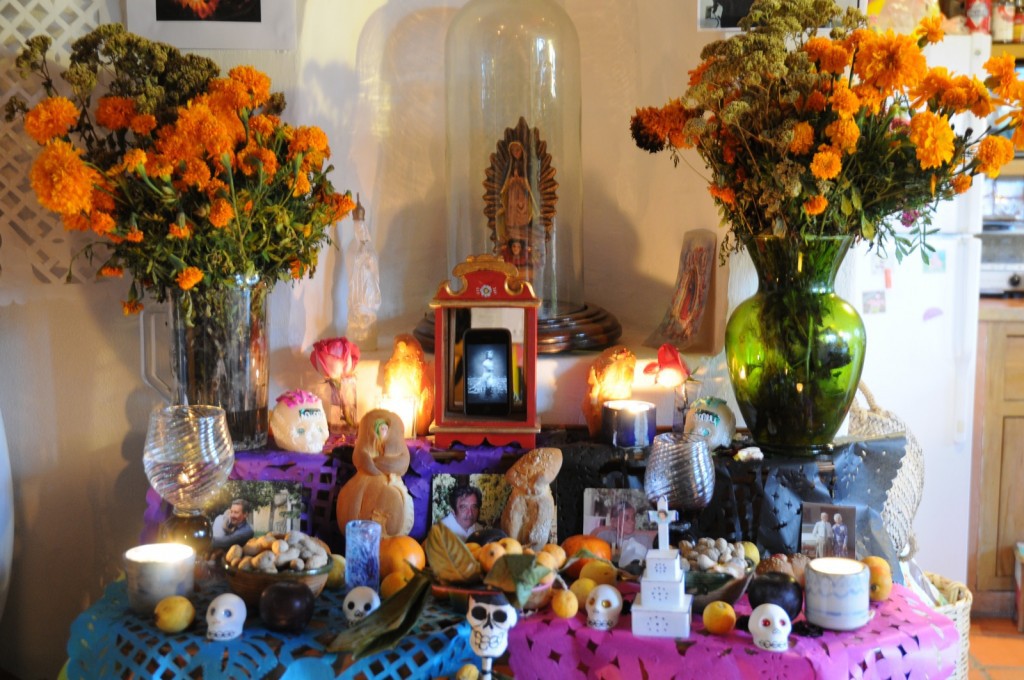Why Latino Catholics Celebrate 3 Life Events in Ways that Other Cultures Normally Don't
Jan 14, 2016 by Veronica Mena
The Latino American culture is rooted in the Catholic religion. Maybe this statement sounds hard to believe if you watch the news or read the lastest survey by the Pew Research Center about how people are losing their religion, but I don't see that too much from my own experience.
I think that most Latino Catholics keep their beliefs, and we continue to grow thanks to the respect for values and customs that are practiced from a very young age and encouraged by parents who are good role models. And I bet our kids, when they are grown, will do the same with their own children.
In my Hispanic culture we celebrate life, and commemorate death, in a way that is never separated from religion. For many of us, being aware of why we do this is not as important as following the inherited traditions and customs. But taking the time to learn why helps faith go deeper. Let me tell you briefly about two Hispanic traditions celebrated with all the formality required as if they were among the Seven Sacraments: the Quinceañera (or Sweet Fifteen), and the Presentation of a Child. Then I will share how we celebrate someone's passing from this life to the next.
1. THE PRESENTATION OF A CHILD
The Presentation of a Child is a thanksgiving ritual for a child who is forty days old or three years old. Although this celebration is followed as part of a tradition in various Hispanic countries, the event has a historical connotation that most people don't know about.
Why do we celebrate this?
The Presentation of a Child (Las Presentaciones) is a ritual in honor of the Virgin Mary's presentation at the temple at the age of three, and the Presentation of the Baby Jesus in the temple 40 days after Christmas. It is normally done for girls, although it may also be done for boys. The child is dressed in a gown or elegant suit and is accompanied by parents and godparents. After the Mass, a feast with music is a must. Gifts to the child from the godparents can be rings, medals, a rosaries, bracelets, money, and more.
Although I am from Latin America my parents didn't observe this ritual for me, so I didn't do it for my sons, and neither did any of my friends from Central and South America—so I discovered that celebrating the presentation of a child is stronger in the Mexican community.
The Presentation tradition is a precursor to the child receiving the Sacrament of Baptism, which is another lavishly celebrated life event for Latinos. I don't remember my baptism, of course, but luckily, my mom kept and gave me an original picture from that day, in which I am held by my godparents at the Basílica Nuestra Señora de Guadalupe in San Salvador. I recently visited this church and it was great to see that they still have the same baptismal font.
2. QUINCEANERAS (LOS 15 ANOS)
If you are not Latino American but you have heard the word Quinceanera before, or you have witnessed a church ceremony for a teen girl, this is a celebration called Fiesta Rosa (Pink Party), where a fifteen-year-old girl is called a Quinceañera. Pink is the classic color to wear - although the tradition has changed and now girls can choose another color.
Not just another birthday party
As part of the Hispanic community, I feel like we celebrate a Quinceañera as if it was one of the Seven Sacraments because the ritual requires a full etiquette and extravaganza. I remember my teen days when some of my friends could even choose between a car or a Quinceañera party, and guess what? The girls chose the party! (I didn't get that option from my parents, though).
I tell you this to illustrate how important the Quinceañera celebration is, not only for the birthday girl, but for the parents, who inherited this tradition as well, and who want to give their daughters the very best. It is a custom still kept and passed from generation to generation in Latin America, but not followed in Spain as it used to be.
This tradition can be lavish and full of symbolism. The video below shows the entrance of a Quinceañera into the chapel, while a mariachi band serenades her before Mass.
The Quinceañera is accompanied by chambelanes. They are brothers, cousins, or friends, and there can be as many as fifteen of them participating. Bridesmaids are optional. There are padrinos de velación (godparents of vigil): a faithful Catholic couple who are responsible for serving as an example to, and council for, the young girl.
Why do we celebrate 15 years of age?
I recently asked some parents why the Quinceañera celebration is so important. They replied, "Because it is tradition, and it means that our daughter is no longer a little girl, but a young woman. So we show our thanksgiving for her life. This is also the way that she is introduced into society."
Going back in history, the act of introducing young girls into society showed that they were now eligible for marriage (although today this reason for the practice would be inconceivable). But beyond the tradition, I learned that a Quinceañera celebration is a formal renewal of a 15-year-old girl's baptismal vows.
3. FUNERALS & DIA DE LOS MUERTOS
The pastor of my local parish recently attended a funeral in my hometown of Charlotte; but he didn't find the solemn atmosphere that he is accustomed to seeing at funerals. He was almost shocked to find a mariachi band singing a last farewell to the beloved departed. Somebody's grandmother had died, he told me, and she was dressed as a queen, with a gown and tiara.
When It Is Time to Cry, We Sing
This is another important part of my Hispanic culture: when a loved one dies, some families decide to offer el último adiós (the last farewell) with mariachis! Some people even asked for it as part of their will. It is also common to bring mariachis to the cemetery for Día de los Muertos (Day of the Dead) to remember the faithful departed with joy, and singing songs such as "Cuando muera no me lloren" (When I die, do not cry for me).
Traditions honoring the dead vary among Latin American countries. For example, throughout the Day of the Dead celebrations, part of the tradition in Mexico is to decorate home altars in honor of deceased relatives. In Central America the feast of the Day of the Dead can be accompanied with mariachis, too, while we come to enflorar (bring flowers) to the graves of our deceased relatives in the cemetery.
Why do we do this?
Part of my understanding for why we celebrate such things is because Catholics in Latin America really live religion as a tradition; it is deeply rooted, and you can't separate anything in life from it. Faith helps us to overcome everything, and gives us hope for the future.
This might be one of the reasons why even people living in poverty seem to be happy; it's not that they are happy about their difficult circumstances, but, in general, they are optimistic and are always putting their hope in God. This is something that deeply moves me and makes me appreciate the Latino culture.
The lavishness of such celebrations depends on each family's budget, but in all cases, I think it is a beautiful expression of love. I have never questioned this practice, and I wouldn't mind receiving a farewell like this, too. I just love it.
What are your thoughts about these beautiful celebrations?
Have you ever experienced one first-hand?
Share your thoughts with us!







